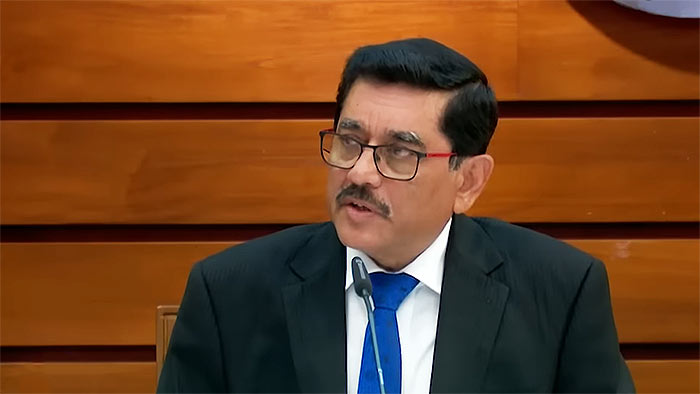Sri Lanka gives China deal details, keeping IMF aid on track

Dr. Nandalal Weerasinghe. (Photo: CBSL)
Sri Lanka’s central bank chief said the government has shared the terms of a $4.2 billion China debt deal with other creditors a key sticking point with countries like India paving the way for more loans from the International Monetary Fund.
Governor Nandalal Weerasinghe said he hopes the official creditors committee, which is led by Japan, India and the Paris Club of nations, will now propose an agreement to restructure Sri Lanka’s debt. He expects that will allow the IMF to approve a payout of $330 million before the end of the year, he said in an interview in Colombo on Thursday.
Sri Lanka’s recent debt deal with Export-Import Bank of China caught the IMF and creditor nations like India by surprise, with some officials raising concerns about the lack of transparency over the agreement. China, which is Sri Lanka’s biggest bilateral lender, isn’t part of the official creditors committee.
Weerasinghe, 62, said details of the China agreement have now been shared with the creditor committee and the IMF.
“We hope the official creditors will also respond with their support so that we can go ahead” with the IMF’s funding program, he said. He didn’t disclose the terms of the China deal in the interview.
Sri Lanka is trying to reach a debt restructuring agreement with its bilateral creditors and bondholders to allow it to keep receiving funds under a $3 billion bailout package with the IMF. That would help to further stabilize the economy after the worst crisis in seven decades last year forced the nation to default on its debt for the first time in its history.
“We are moving in the right direction,” Weerasinghe said.
Sri Lanka has also received a debt restructuring proposal from a group of dollar bondholders, which didn’t get the backing of the government. Weerasinghe said the authorities continue to engage with commercial lenders, who may also be waiting to assess the debt proposal from bilateral creditors.
A career central banker, Weerasinghe took office in April 2022 when the economy was in a tailspin, with shortages of everything from fuel and electricity to medicine. Inflation hit a peak of nearly 70% later that year and angry protests forced then-President Gotabaya Rajapaksa to flee the country.
Inflation is now down to 1.5%, foreign exchange reserves have rebounded to $3.6 billion, and shortages of essentials have eased.
Weerasinghe reiterated that the central bank was leaving the exchange rate to market forces while only intervening to smooth volatility and accumulate reserves when the opportunity provided.
A 12% surge this year has catapulted the island nation’s currency to among the top performers globally. That’s a remarkable turnaround from its 45% slide in 2022. Funds from the IMF has also spurred optimism over Sri Lanka’s fiscal recovery, with the nation’s dollar bonds returning almost 70%.
Weerasinghe has played a pivotal role in securing the IMF bailout and been a key figure in the debt negotiations with creditors. He’s also championed a new Central Bank Act that aims to ensure price stability through a flexible inflation targeting regime and independent monetary policy decision-making.
The governor also made the following comments in the interview:
- Sri Lanka is well in line with targets set out in the IMF program, including building foreign exchange reserves and central bank credit to the government
- He would like to see reserves increased to about 3 months of import cover, but may not be as much as the IMF is recommending as the country intends to eventually move toward a fully floating exchange rate
- Monetary policy transmission would speed up, and the gap between policy and market rates would narrow, once uncertainties over the debt restructuring are cleared
(Bloomberg)

Latest Headlines in Sri Lanka
- Popular rapper Shan Putha arrested with firearm March 14, 2025
- Batalanda commission report tabled in Sri Lankan Parliament March 14, 2025
- Female Grama Niladharis withdraw from night duty over security concerns March 14, 2025
- Sri Lanka ranked as the best country for settling down March 14, 2025
- UN pledges support for Sri Lanka’s industrial and SME development March 13, 2025


